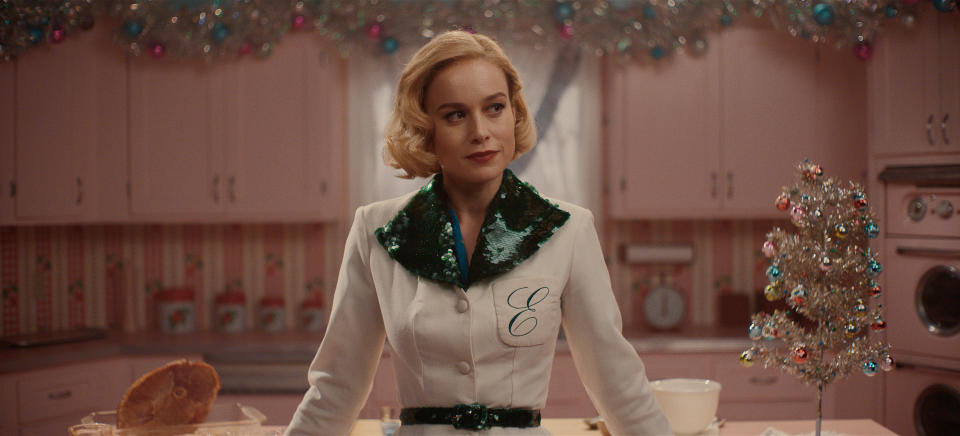‘Shogun,’ ‘Ripley’ Bring Period Styles From Feudal Japan and Italy to Emmys Race

There is a wealth of period costumes cross the categories for Emmy voters to think about this season.
In limited series, Oscar-winner Colleen Atwood built 200 to 300 leather jackets for AppleTV+’s World War II drama “Masters of the Air.” “It took six months to get them built,” Atwood says. Procuring the right elements was a global process that included getting era-specific zippers from Japan and sheepskin from Scotland and England.
More from Variety
Atwood also explained the unconventional aging process of the garments, saying that “once they were built, we had to shear the inside so they weren’t as thick, and then we put them in a vat of rocks inside a cement mixer to beat the leather up.”

“Shōgun” (now competing in drama series) costume designer Carlos Rosario built over 2,000 costumes for the 10-part show set in feudal Japan.
Rosario found himself limited by what primary sources were available, but he found paintings insightful to his research process. One of the costumes for Lady Ochiba (Fumi Nikaido) was based on a painting of the “Lady Ochiba of that period,” he says. Rosario notes that the first time we see the character, she’s wearing a beautiful uchikake that was made from scratch. “All those different layers — she’s wearing six or seven different layers — are actually all based on that painting. We studied the patterns of that painting, the layers of that painting, the meaning of those patterns, and then we reproduced that costume.”
“The New Look” costume designer Karen Serreau worked closely with fashion house Dior for the Apple TV+ series about the lives of designers Christian Dior and Coco Chanel during and after World War II.
From sharing swatches and sketches to fabrics, Dior’s collaboration helped Serreau’s work come together, especially when she needed to build certain outfits. The leopard-print fabric that she used to construct a dress came directly from Dior.

In Netflix’s “Ripley,” costume designers Giovanni Casalnuovo and Maurizio Millenotti tracked the transformation of Andrew Scott’s Tom Ripley from petty con man to murderous con man with bigger plans. Clean lines with a modest sense of fashion marked his humble beginnings but also reflected his circumstances. But as Ripley steps out into the world, his confidence grows, and with that so do his looks.
When he travels to Rome, Ripley’s clothes are more tailored. The designers’ biggest challenge was presenting a wardrobe that would reflect the character and his social status in black-and-white. Their solution? Enhancing fabric texture, patterns and even silhouettes in greater detail.
Brie Larson’s Elizabeth Zott does not conform to society’s standards in Apple TV+’s “Lessons in Chemistry,” set in the 1950s and ’60s. Costume designer Mirren Gordon-Crozier portrayed Elizabeth’s
growth and journey from lab tech to eventual cooking show host. At the lab, Gordon-Crozier dressed her in teals, salmon pink and neutral colors. Elizabeth’s wardrobe staple was her lab coat, which had
pockets. Gordon-Crozier used a different style lab coat for every episode. Even as a TV show host, Elizabeth wore a lab coat because she considered aprons silly, and the lab coat covered more surface area.
Ultimately, Gordon-Crozier wanted to show a woman of that time who wasn’t oppressed by her fashion and didn’t dress for society, unlike other women who surrounded her.

Annie Symons leaned into the opulence and flamboyance of the Jacobean era (1603-1625) for Starz’s “Mary & George,” a period rarely seen on TV. Symons turned to portraits for inspiration. When audiences are first introduced to Mary, she’s not well-off. Her palette is depleted. But as the show continues, she trades sex and clothes for power. Bows, feathered hats and collars were the norm for Mary. When she marries, she marries into wealth and obtains the power she seeks — and lace, pearls and elaborate sleeves become the norm. Similarly, pearls on Nicholas Galitzine were the norm for George since that was common for that era.

Other contenders in the costume design category include “Fargo,” “True Detective: North Country,” “Expats,” “Feud: Capote vs. the Swans” “All the Light We Cannot See” Shogun,’ ‘Ripley’ Bring Period Styles From Feudal Japan and Italy to Emmys Raceand “We Were the Lucky Ones.”
Best of Variety
Sign up for Variety’s Newsletter. For the latest news, follow us on Facebook, Twitter, and Instagram.

 Yahoo News
Yahoo News 
